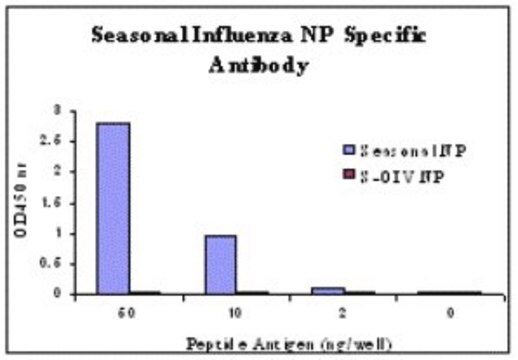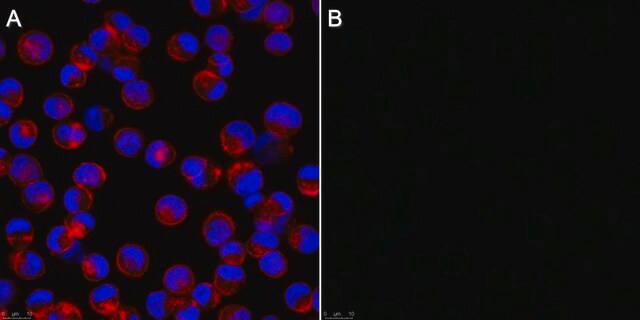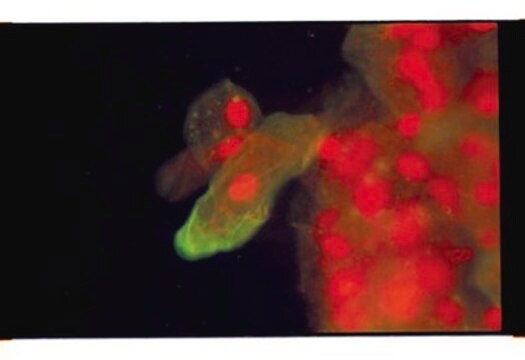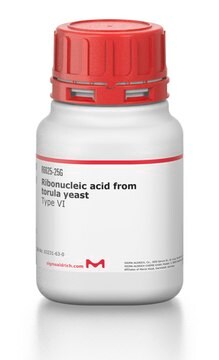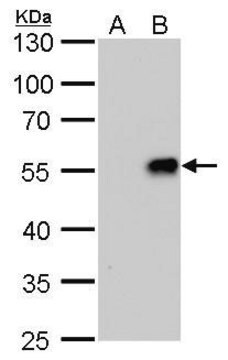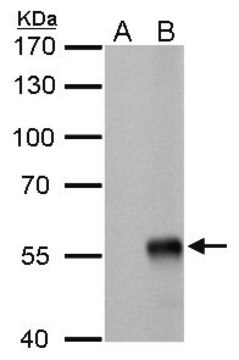MAB8261
Przeciwciało przeciw grypie A, H1N1, klon 9B3.2
clone 9B3.2, Chemicon®, from mouse
Zaloguj sięWyświetlanie cen organizacyjnych i kontraktowych
About This Item
Kod UNSPSC:
12352203
eCl@ss:
32160702
NACRES:
NA.41
Polecane produkty
pochodzenie biologiczne
mouse
Poziom jakości
forma przeciwciała
purified immunoglobulin
klon
9B3.2, monoclonal
reaktywność gatunkowa
human
producent / nazwa handlowa
Chemicon®
metody
immunofluorescence: suitable
izotyp
IgG2a
Warunki transportu
wet ice
Specyficzność
Antygen grypy A H1N1. Nie wykazano reaktywności wobec szczepów grypy B.
REAKTYWNOŚĆ GATUNKOWA:
Silnie reaguje z następującym szczepem H1N1: Pekin. A/Teksas /36/91, A/Berkeley/1/98, A/HongKong/503/97, A/Nanchang /16A/98, A/PR8/34 i New Caledoniastrain.
REAKTYWNOŚĆ GATUNKOWA:
Silnie reaguje z następującym szczepem H1N1: Pekin. A/Teksas /36/91, A/Berkeley/1/98, A/HongKong/503/97, A/Nanchang /16A/98, A/PR8/34 i New Caledoniastrain.
Immunogen
Epitop: H1N1
Mieszanka na grypę
Zastosowanie
JEŻELI
Optymalne rozcieńczenia muszą być określone przez użytkownika końcowego
Optymalne rozcieńczenia muszą być określone przez użytkownika końcowego
To przeciwciało przeciw grypie A, H1N1, klon 9B3.2 zostało zatwierdzone do stosowania w IF w celu wykrywania grypy A.
Research Category
Infectious Diseases
Infectious Diseases
Research Sub Category
Infectious Diseases - Viral
Infectious Diseases - Viral
Postać fizyczna
Format: Oczyszczony
Oczyszczona immunoglobulina. Płyn w 0,02 M buforze fosforanowym + 0,25 M chlorku sodu + 0,1% azydku sodu, pH = 7,6
Przechowywanie i stabilność
Przechowywać w temperaturze od 2° do 8°C przez okres do 12 miesięcy od daty otrzymania.
Inne uwagi
Stężenie: Stężenie specyficzne dla danej partii można znaleźć w certyfikacie analizy.
Informacje prawne
CHEMICON is a registered trademark of Merck KGaA, Darmstadt, Germany
Oświadczenie o zrzeczeniu się odpowiedzialności
Unless otherwise stated in our catalog or other company documentation accompanying the product(s), our products are intended for research use only and are not to be used for any other purpose, which includes but is not limited to, unauthorized commercial uses, in vitro diagnostic uses, ex vivo or in vivo therapeutic uses or any type of consumption or application to humans or animals.
Ta strona może zawierać tekst przetłumaczony maszynowo.
Kod klasy składowania
10 - Combustible liquids
Klasa zagrożenia wodnego (WGK)
WGK 2
Temperatura zapłonu (°F)
Not applicable
Temperatura zapłonu (°C)
Not applicable
Certyfikaty analizy (CoA)
Poszukaj Certyfikaty analizy (CoA), wpisując numer partii/serii produktów. Numery serii i partii można znaleźć na etykiecie produktu po słowach „seria” lub „partia”.
Masz już ten produkt?
Dokumenty związane z niedawno zakupionymi produktami zostały zamieszczone w Bibliotece dokumentów.
Evolution of the influenza A virus genome during development of oseltamivir resistance in vitro.
Renzette, N; Caffrey, DR; Zeldovich, KB; Liu, P; Gallagher, GR; Aiello, D; Porter et al.
Journal of virology null
Detection of mouse-adapted human influenza virus in the olfactory bulbs of mice within hours after intranasal infection.
Jeannine A Majde,Stewart G Bohnet,Georgeann A Ellis,Lynn Churchill,Victor Leyva-Grado et al.
Journal of Neurovirology null
Kristina L Prachanronarong et al.
Journal of virology, 93(2) (2018-11-02)
Influenza A virus (IAV), a major cause of human morbidity and mortality, continuously evolves in response to selective pressures. Stem-directed, broadly neutralizing antibodies (sBnAbs) targeting the influenza virus hemagglutinin (HA) are a promising therapeutic strategy, but neutralization escape mutants can
Li Jiang et al.
Journal of virology, 96(6), e0198221-e0198221 (2022-01-20)
Many oseltamivir resistance mutations exhibit fitness defects in the absence of drug pressure that hinders their propagation in hosts. Secondary permissive mutations can rescue fitness defects and facilitate the segregation of resistance mutations in viral populations. Previous studies have identified
Sialylneolacto-N-tetraose c (LSTc)-bearing liposomal decoys capture influenza A virus.
Hendricks, GL; Weirich, KL; Viswanathan, K; Li, J; Shriver, ZH; Ashour, J; Ploegh et al.
The Journal of Biological Chemistry null
Nasz zespół naukowców ma doświadczenie we wszystkich obszarach badań, w tym w naukach przyrodniczych, materiałoznawstwie, syntezie chemicznej, chromatografii, analityce i wielu innych dziedzinach.
Skontaktuj się z zespołem ds. pomocy technicznej